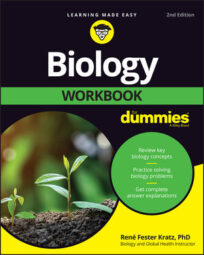Not all the organisms in a given biological community are the same. In fact, they’re often members of different species (organisms that can’t sexually reproduce together and produce fertile offspring). Yet these organisms must interact with one another as they go about their daily business of finding what they need to survive.
Ecologists use a few specific terms to describe the types of interactions among different species:
Predation: One organism (predator) eats another (prey).
Competition: Both organisms suffer as they compete with each other for limited resources such as food, water, or space.
Symbiosis: Two organisms live together for a large part of their life cycle. Three types of symbiosis may occur:
Parasitism: One organism benefits at the expense of the other.
Mutualism: Both organisms benefit.
Commensalism: One organism benefits but the other isn’t benefitted or harmed.
For questions 1–6, use the following terms to identify the type of relationship described in each question.
a. Predation
b. Competition
c. Parasitism
d. Mutualism
e. Commensalism
Bacteria live in cows’ stomachs, where they break down the cellulose in the grass that cows eat. The bacteria get food from the cellulose, and the cows get food from the bacteria.
A group of tomato plants planted close together in a garden shade one another with their leaves.
Barnacles grow on the sides of whales. As whales swim through the ocean, the barnacles are carried through nutrient-rich water. The barnacles don’t hurt or help the whales.
A dog remains very thin despite eating plenty of food because it has a tapeworm living in its intestines. The tapeworm receives nutrients from the dog’s food.
A human kills and eats a chicken.
E. coli lives in the intestines of humans. The bacterium gets nutrients from the food the humans eat. Humans get a vitamin from the bacterium.
The following are the answers to the practice questions.
The answer is d. Mutualism.
The answer is b. Competition (for light).
The answer is e. Commensalism.
The answer is c. Parasitism.
The worm is the parasite.
The answer is a. Predation.
Humans are the predator, and chickens are the prey.
The answer is d. Mutualism.
Other strains of E. coli that occasionally infect humans show parasitism.

